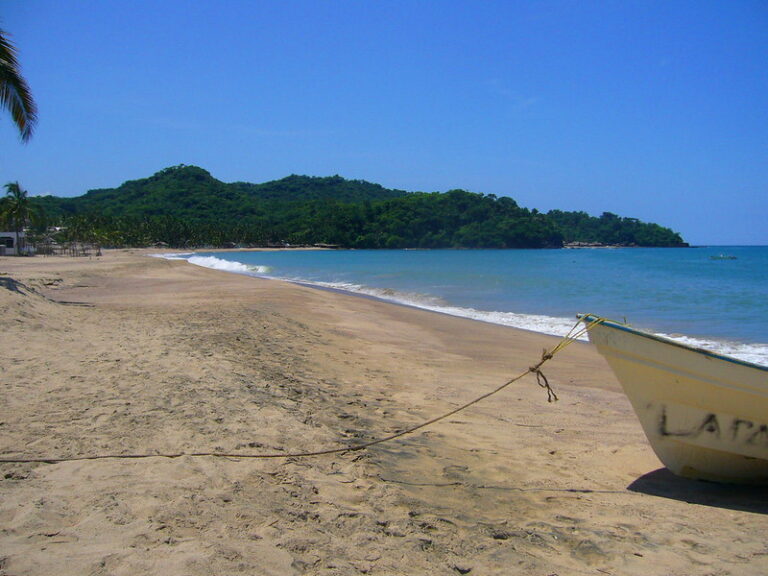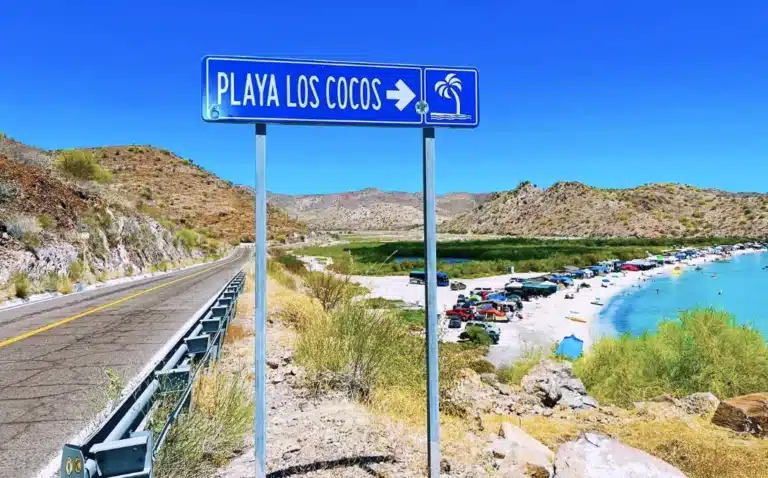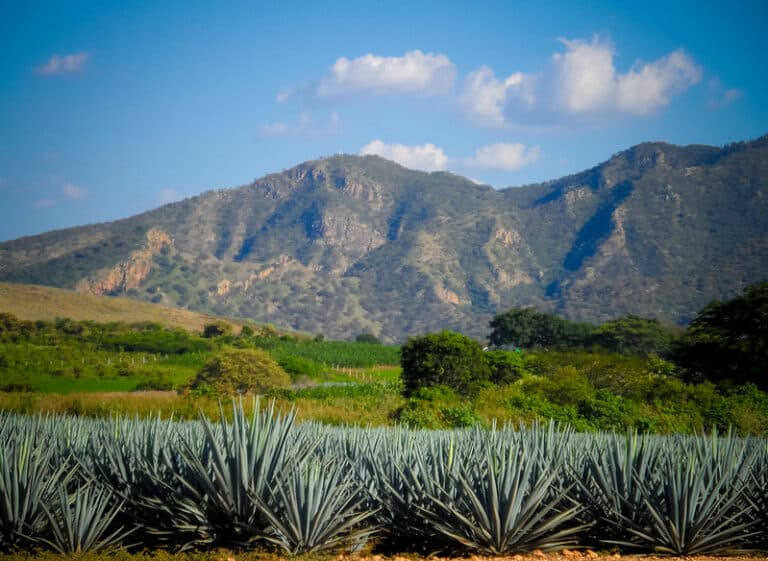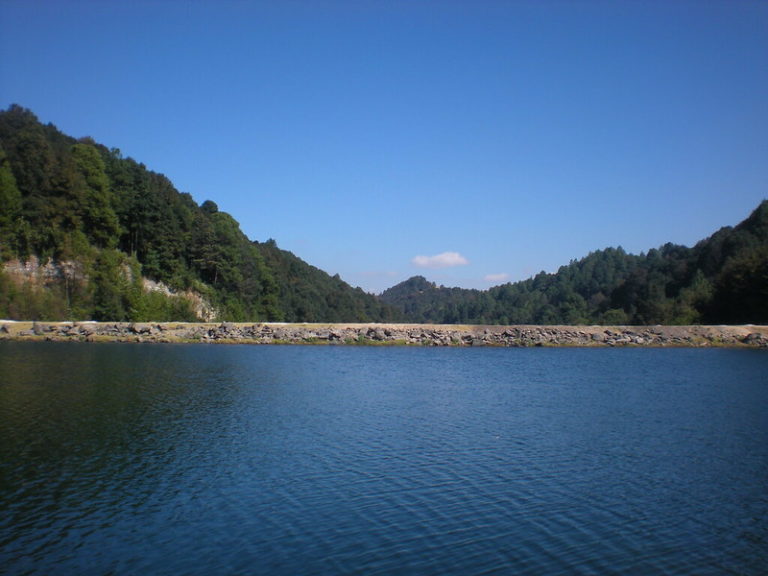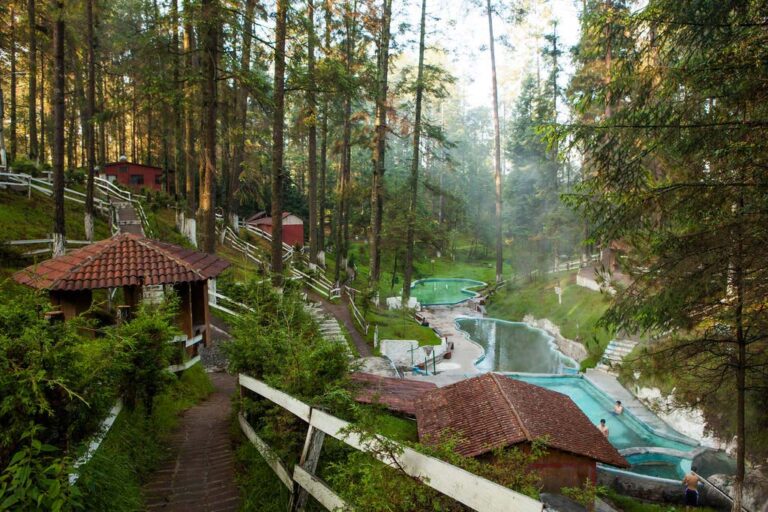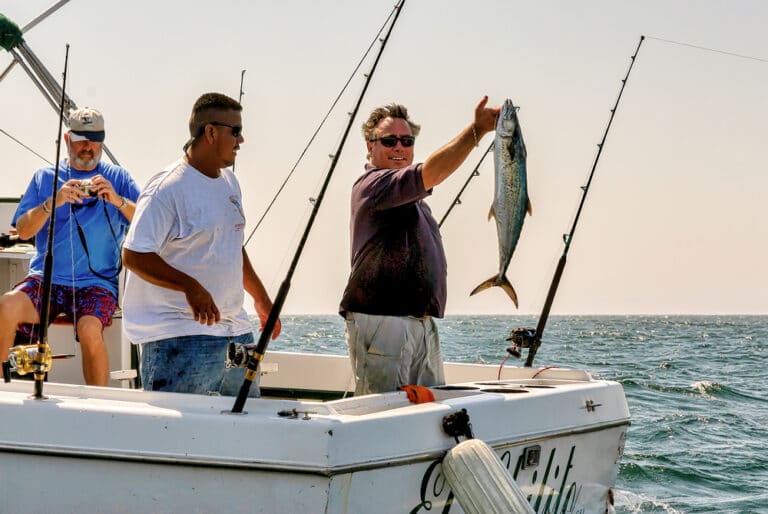Yuriria Guanajuato: Unearthing Enchanted Temples
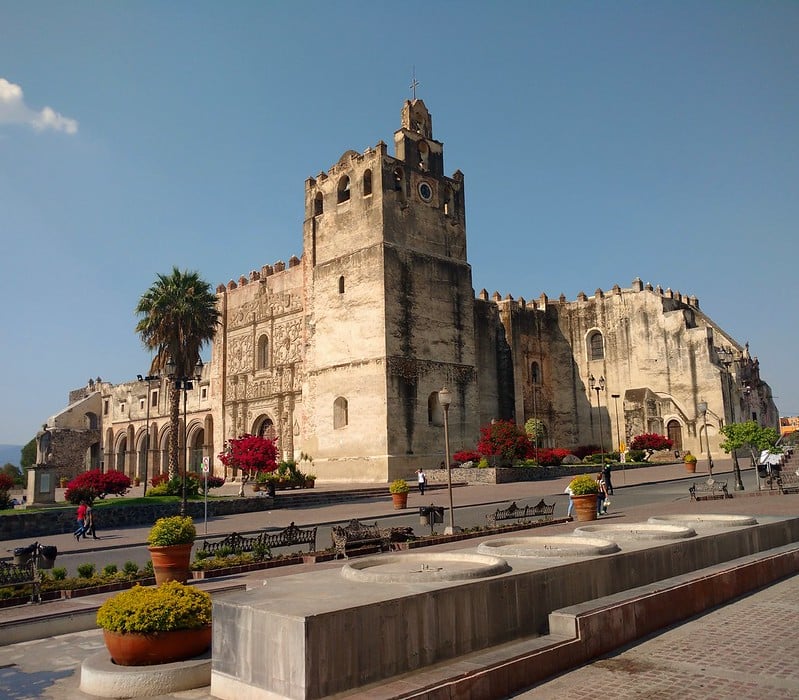
In the lowlands of Guanajuato, with a comfortable climate, Yuriria offers visitors its architectural richness, particularly that of its temples, the beauty of its lagoon, and other charms that I will help you discover with this guide.
The town of Yuriria borders the Guanajuato municipalities of Valle de Santiago, Jaral del Progreso, Salvatierra, Santiago Maravatío, Moroleón, and Uriangato.
In 2012, Yuriria Guanajuato was incorporated into the system of Magical Towns to promote its tourism development.
Where is Yuriria Guanajuato?
Yuriria is 68 km from Guanajuato city and 147 km from Leon.
Other cities near the Magical Town are Morelia, 64 km away, and Santiago de Querétaro, 111 km away.
To go to Yuriria from Mexico City, you will travel 313 km west towards Toluca and Morelia.
Yuriria Guanajuato history
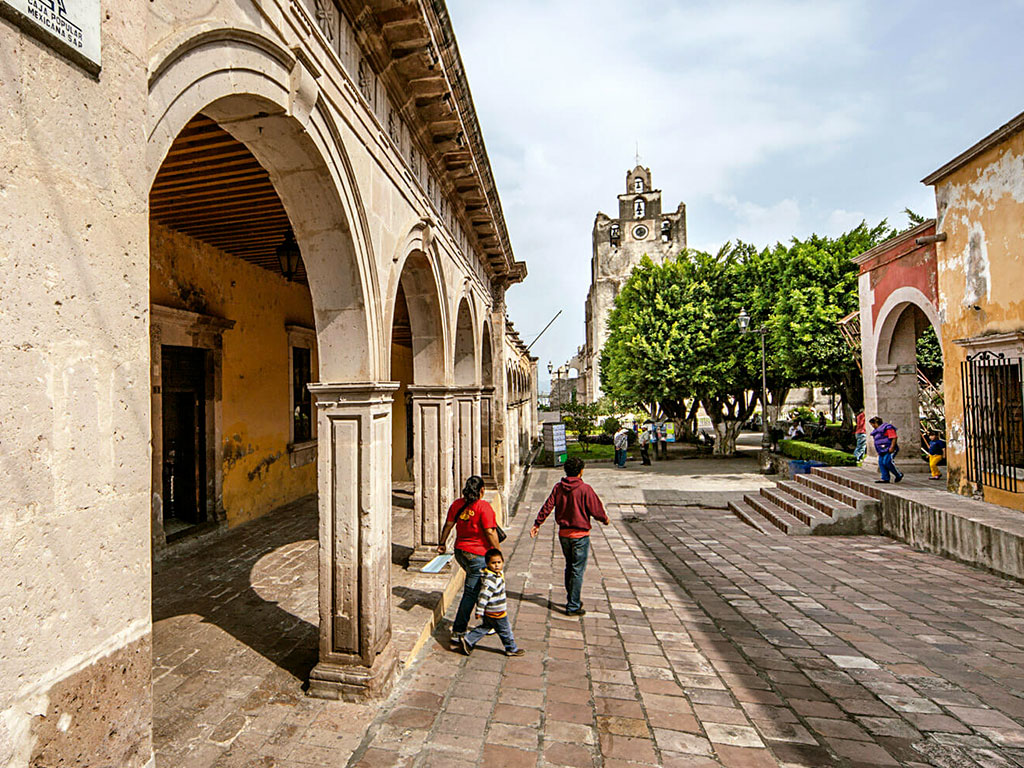
According to the archaeological testimonies, the pre-Columbian inhabitants of the territory lived in the mountains surrounding the crater lake, where ruins of pre-Hispanic constructions have been found, both residential and ceremonial.
The official date of the foundation of Hispanic Yuriria, under the name of San Pablo Yuririhapúndaro, was February 12, 1540, through Diego de Chávez y Alvarado, an Augustinian friar of notable importance in the history of the locality.
Another of Yuriria’s historical episodes is that the San Bernabé, or Rayas, mine was found nearby in 1548, the first mine discovered in Guanajuato.
Typical climate
As I mentioned, Yuriria is located in the lowlands of Guanajuato, at 1,748 meters above sea level, boasting a pleasantly temperate climate with no extreme changes throughout the year.
In the summer months, the average temperature ranges between 21 and 22 °C, dropping to 17 to 18 °C in autumn and 13 °C in winter; in March, it begins to rise, reaching 21 °C by April.
Rainfall is usually between June and September, providing more than three-quarters of the total annual rain.
Main attractions in Yuriria Guanajuato
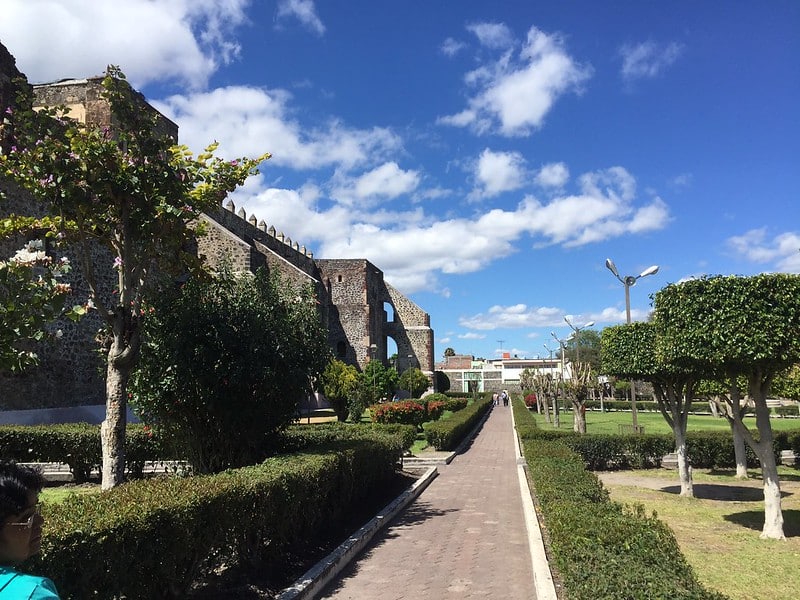
Yuriria is an ideal destination for admirers of religious architecture for its many beautiful temples, some with curious construction characteristics.
Among these churches are the Temple and former Augustinian Convent of San Pablo, the Temple of the Precious Blood of Christ, the Sanctuary of the Virgin of Guadalupe, and the temples of San Antonio, the Immaculate Conception, the Lord of Esquipulitas, and the Hospital.
Near Yuriria, it is worth visiting the towns of Salvatierra, Valle de Santiago, and Uriangato. Which I will review below.
The natural symbol of the Magical Town is the Yuriria Lagoon, with its San Pedro Island and other ecosystems of interest like the Lake-Crater of La Joya and El Coyontle.
The Temple and former Augustinian Convent of San Pablo
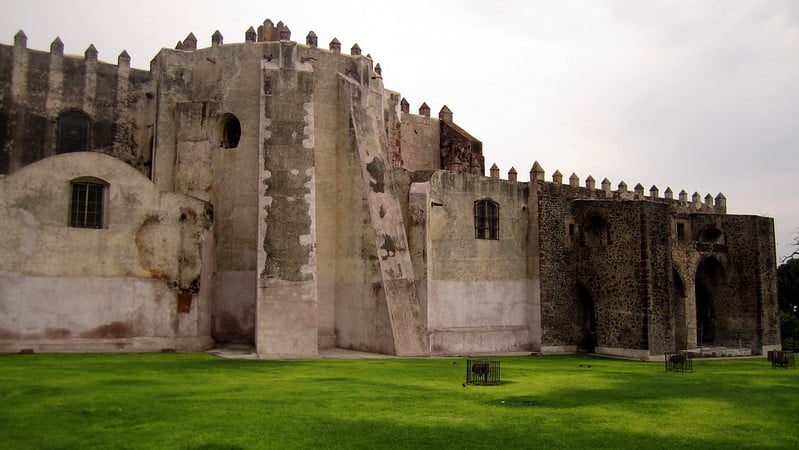
The construction of this 16th-century convent-fortress, inaugurated on Corpus Christi Day in 1559, was personally supervised by Fray Diego de Chávez y Alvarado, nephew of the famous conquistador Pedro de Alvarado, according to the design of the architect Pedro del Toro.
The Augustinians fortified the excellently preserved monastery to defend themselves from the continuous incursions of the Chichimecas. It has an elegant Renaissance portal, and the temple stands out for its Gothic vaults.
In 1814, the priest José Antonio Torres set fire to the religious complex when he learned that the future emperor of Mexico, Agustín de Iturbide, had taken refuge inside the church.
The fire destroyed the valuable red cedar altarpieces preserved in the temple.
In the spaces of the old convent, there is a historical and religious museum that exhibits pre-Columbian and colonial pieces and paintings and sculptures of religious themes of the XVII and XVIII centuries.
The Temple of the Precious Blood of Christ
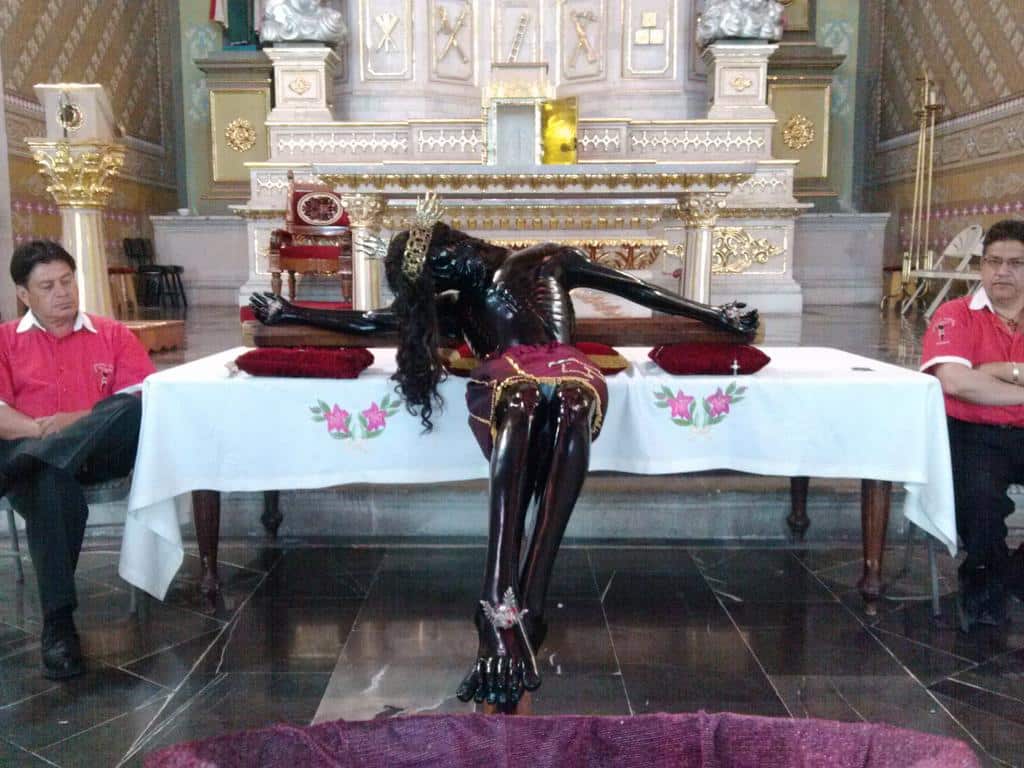
This temple has a sober façade of two sections, a portal with a semicircular arch flanked by double columns, the second section with the choir window, and a pair of columns on each side, crowned by the space that shelters the clock.
The church has two twin bell towers of three bodies and is topped by small domes.
In this church built between 1884 and 1901, a black Christ carved in ebony wood is venerated, brought to Mexico in 1646 from his native Torrijos, Spain, by Fray Alonso de la Fuente.
In the interior also stand out the images of the Immaculate Conception, the Virgin of Carmen, and the Virgin of Solitude, as well as an oil painting of San Liborio.
The Yuriria Guanajuato Lagoon
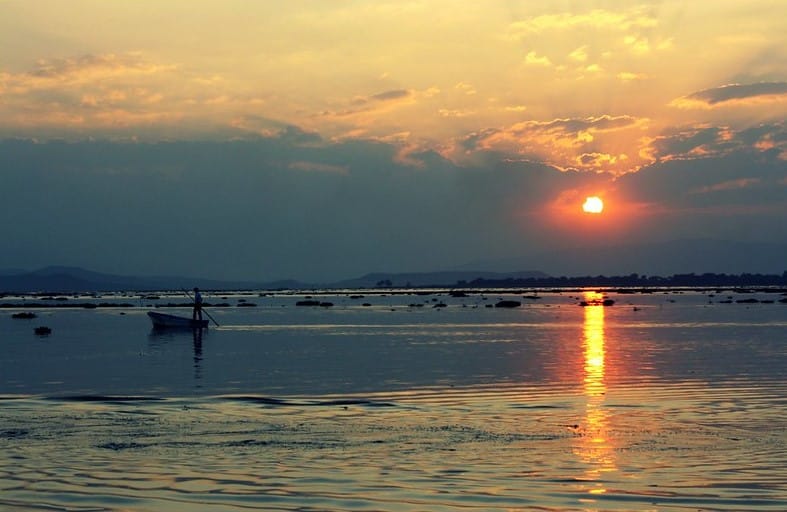
Fray Diego de Chávez y Alvarado was a man of great initiative. In the XVI century, he built this artificial lagoon to regulate and take advantage of the waters of the Lerma River.
This was the first hydraulic work of importance in America during the colonial period.
Currently, it has a water mirror of 80 square kilometers. It is an ecosystem that serves as a temporary refuge for migratory birds and a habitat for several species of aquatic fauna at risk of extinction.
In 2004, the Yuriria Lagoon joined the Ramsar Convention, including wetlands of global importance for biodiversity.
San Pedro Island is located in the lagoon, and on its southern shore is El Coyontle.
San Pedro Island
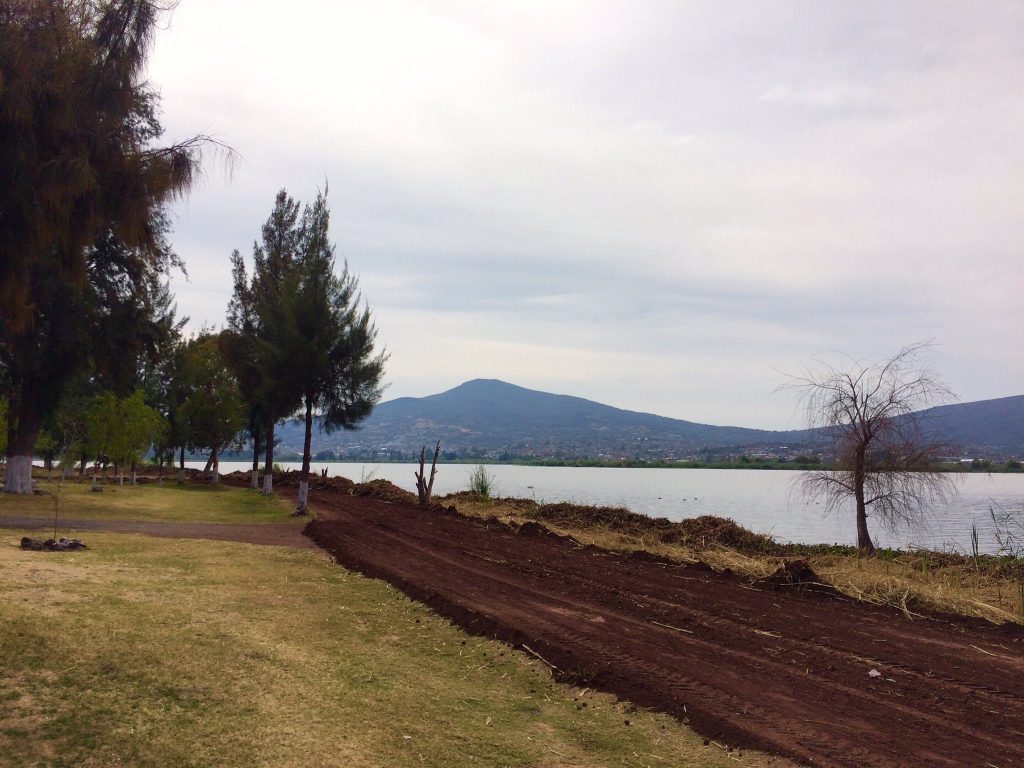
This island in the Yuriria Lagoon is no longer an island since a dirt road was built to connect it to the mainland.
On the island is the Chapel where Padre Nieves is revered, an important religious site for the locals.
Fray Elías del Socorro Nieves was a priest born in Yuriria in 1882, and assassinated in 1928 amid the Cristero War.
Also, the island is frequented by Yuriria fishermen and visitors who go fishing in the Yuriria Lagoon.
Visit the Sanctuary of the Virgin of Guadalupe
This church of particular architecture has its bell tower of three bodies located in the central part; in the first body is the choir, the second is the bell tower, and the third is the clock.
Above the body of the clock, there is a small dome. The temple’s construction began in 1903 but was paralyzed during the Mexican Revolution, concluding in 1945.
The facade is made of quarry stone, and from the frontal arch, a triangular top is the primary access to the church.
Templo de San Antonio like
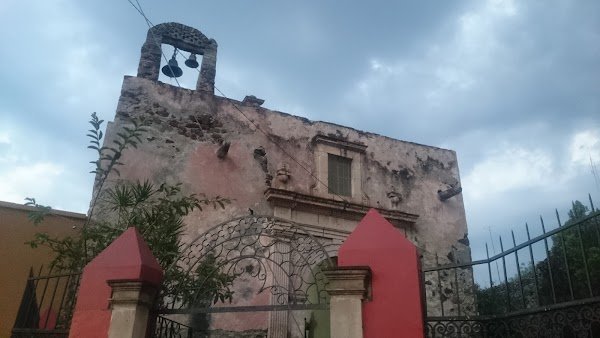
This small temple between the Ex-Convent of San Agustín and the Temple of the Precious Blood of Christ is frequently closed, although its façade can be admired from the fence that separates it from the street.
The façade is stonework, and the doorway is a semicircular arch with pilasters on both sides.
The church doesn’t have a tower, and the bells are placed in a belfry. Inside, the dome is beautifully ornamented with frescoes alluding to St. Augustine, St. Jerome, St. Gregory, and St. Ambrose.
Things to do in La Joya Crater Lake
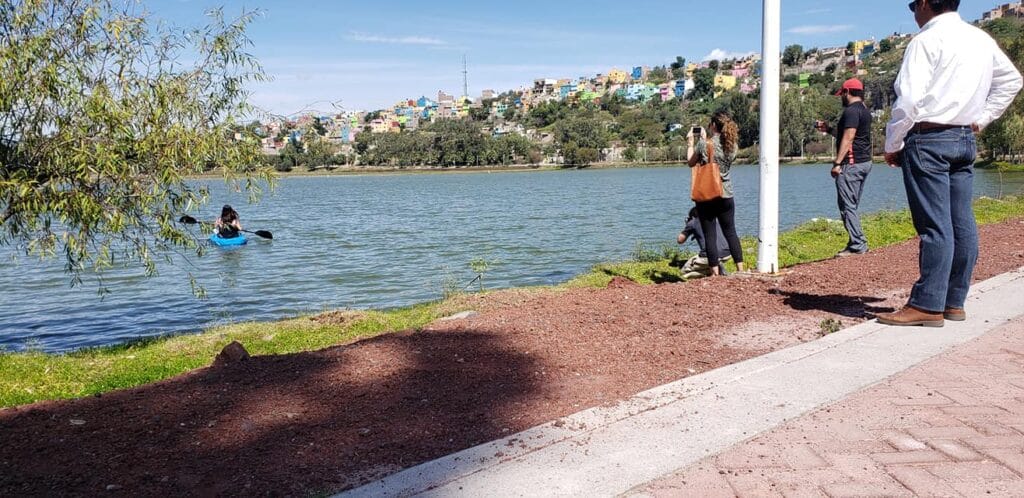
La Joya Crater Lake Ecological Park is a protected area of 1,479 hectares, located in the Santiago Valley, in the central part of the state of Guanajuato, touching the town of Yuriria on the southeast side.
Yuriria means “Place of the blood-lake” in the Purépecha language because until a few decades ago, this lake-crater was stained red by the large amounts of sulfur that entered its waters due to volcanic activity and seismic movements.
The lake is used for canoeing, fishing, and cycling in the surrounding area. Supposedly, it was the scene of human sacrifices during pre-Hispanic times, using the sacrificial stone next to the old convent.
Curiosities in the Templo de la Purísima Concepción
This church, built between 1710 and 1720 by Fray Alonso de Esqueda, has a façade of two levels separated by a cornice and a door with a semicircular arch with Ionic pilasters on the sides.
Like the Sanctuary of the Virgin of Guadalupe, the tower belfry is in the central plane.
On the right side of the facade, there is a cubic body, unusual in Christian architecture.
The altarpieces and images of the Immaculate Conception, the Virgin of Guadalupe, San Judas Tadeo, San Agustín, Santa Ana, and a Jesus cross stand out in the interior.
El Coyontle near Yuriria Lagoon
El Coyontle is an elevation located on the southern shore of the Yuriria Lagoon.
It comprises part of the protected area of the lagoon, particularly for its mesquites, a leguminous tree of hardness wood, very appreciated for making furniture and instruments and for cooking the typical barbacoa.
The Coyontle, which means “Hill of Coyotes,” provided the stones used during the colony to build the temple and former Augustinian convent of San Pablo and other buildings of the Magical Town.
The Coyontle is also home to some species of fauna that are at risk of extinction.
Templo del Hospital
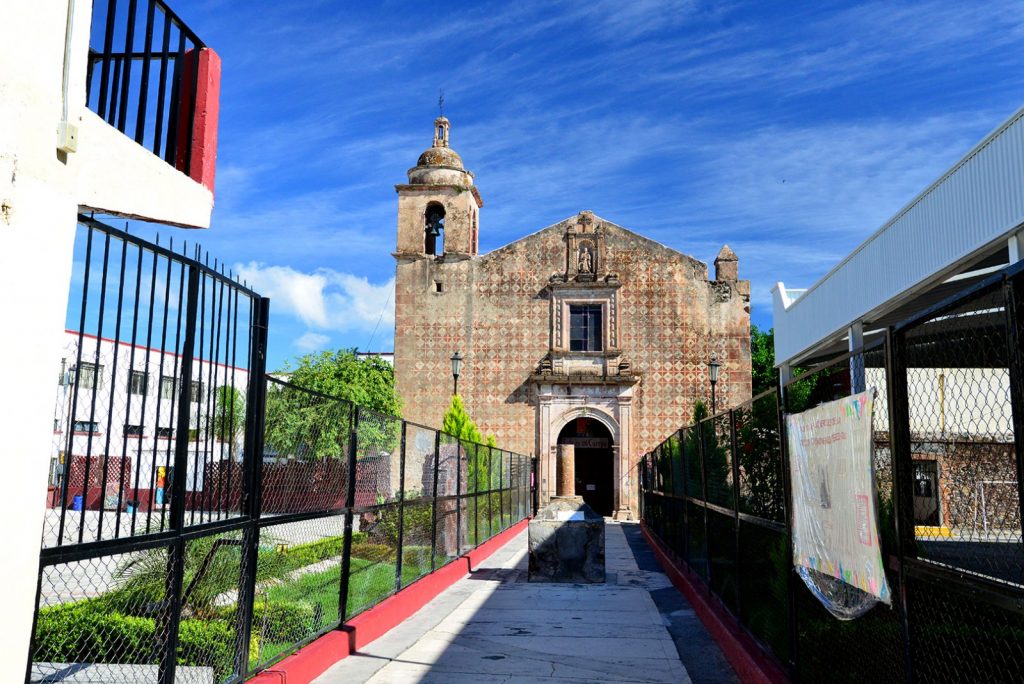
This sober temple is inside the Colegio el Buen Consejo, a private school at Miguel Hidalgo Street.
According to what is written on the exterior wall, its construction began in 1549 on the initiative of Fray Diego de Chávez y Alvarado.
The construction was initially destined for a hospital that attended to the indigenous population, hence its name.
Its facade is very austere and has a single tower-belfry of two levels. In the interior, the quarry pulpit and the images of San Luis de Granada, the Immaculate Conception, Christ Crucified, Santa Teresita, and the Divine Prisoner stand out.
Visit Salvatierra Guanajuato, near Yuriria
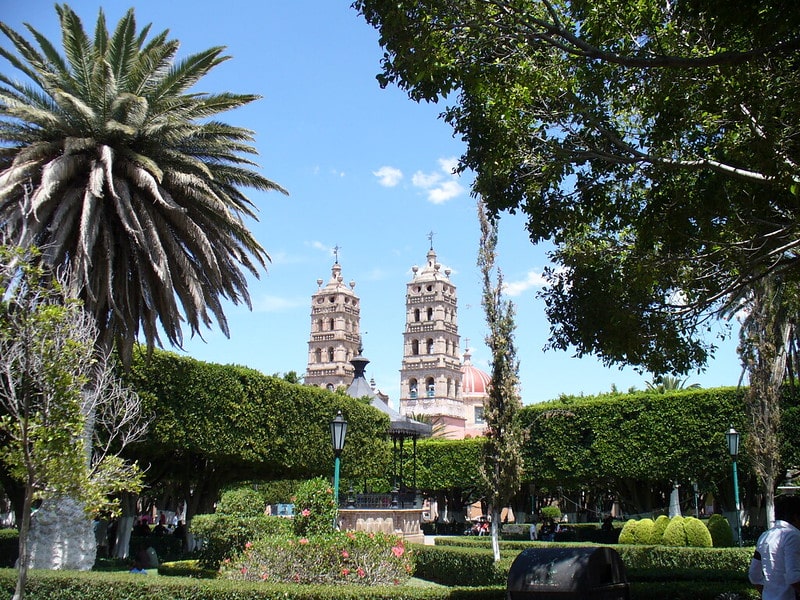
Only 28 km east of Yuriria is also the Magical Town of Salvatierra Guanajuato, distinguished by the beauty of its civil and religious architecture.
Among the civil buildings are the Main Garden, the Municipal Palace, the Portal de la Columna, the Hidalgo Market, the Batanes Bridge, the Fuente de Perros, and the Municipal Historical Archive and City Museum.
The main religious sites of historical and artistic interest are the parish church of Nuestra Señora de la Luz, the former convent of the Capuchinas, and the temple of Señor del Socorro.
Valle de Santiago Guanajuato
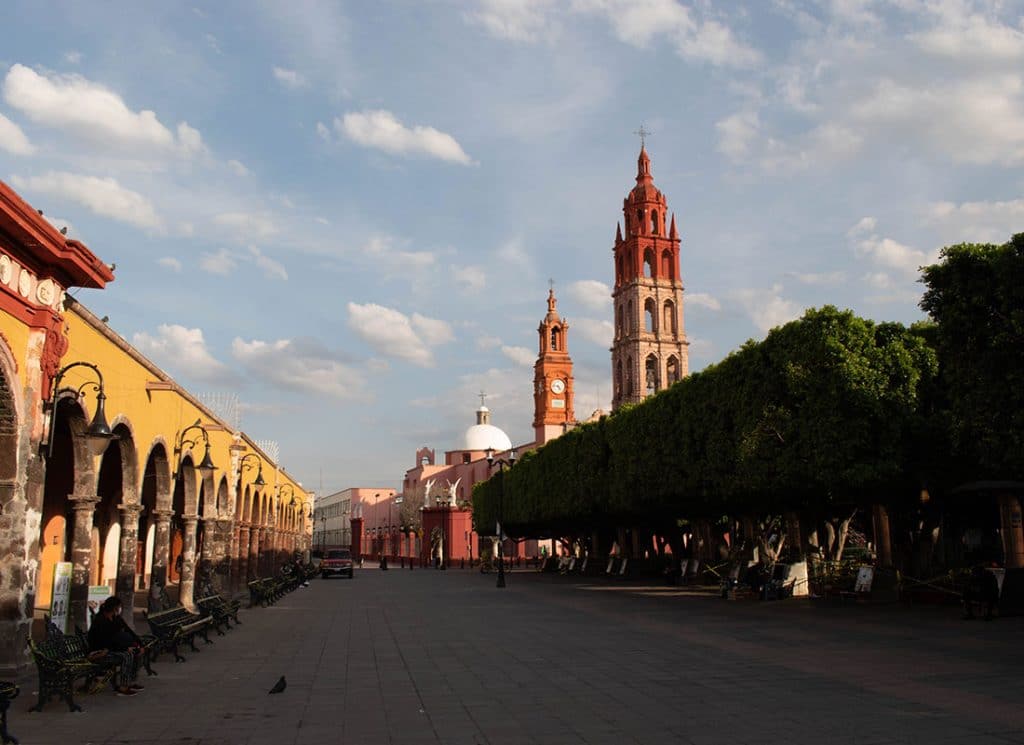
31 km north of Yuriria is the city of Valle de Santiago, which offers a set of tourist attractions that are worth knowing.
The town is framed by the 7 Luminarias, name given to the extinct volcanoes, La Alberca, Hoya del Rincón de Parangueo, Hoya de Flores, Hoya de Cíntora, Hoya de San Nicolás, Hoya de Solís, and Hoya de Álvarez.
These seven volcanoes make up a protected area with great beauty, healing waters, and cave paintings.
The temples of Santiago Apóstol, La Merced, San José, the Hospital Church, and the Portal Morelos stand out for their architectural interest.
Traditional celebrations in Yuriria Guanajuato
The most awaited party in Yuriria is January 4, when the Feast of the Precious Blood of Christ is held in the temple of the same name, which houses the famous black Christ.
People from all over Guanajuato and the rest of Mexico attend these festivities and among its attractions is a parade of floats.
On February 12, Yuriria’s anniversary is commemorated with cultural activities and dances. Another exciting event in the Magical Town is the Day of the Dead Altar Contest on November 2.
Local handicrafts and gastronomy
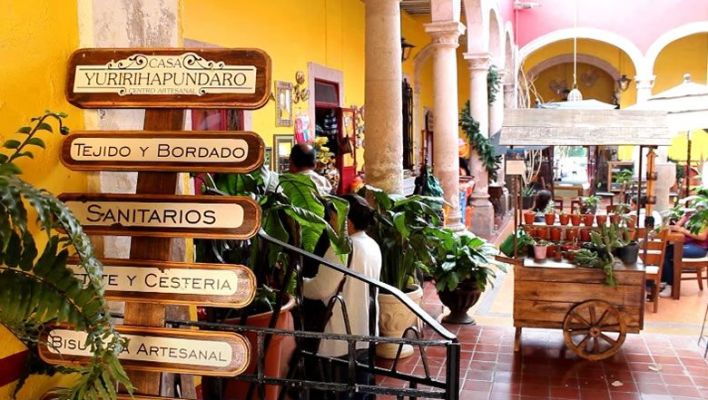
One of the most popular dishes in Yuriria is the local Caldo Michi, whose primary ingredient is catfish from the lagoon, including carrots, pumpkin, chayote, chili peppers, and aromatic herbs that are a staple of Mexican soups.
Other specialties are mole huilota and squirrel with mole.
As for handicrafts, Yurirenses artisans make rebozos (shawls) and elaborate mats and basketry pieces with the tule fiber they collect on the lagoon shores.
They also make beautiful cross-stitch weavings and leather objects.
Lodging
- Hotel Tiberíades located at Calle Santa María 50, is a centrally located hotel near the Yuriria Lagoon
- Hotel El Rinconcito, on Calle de Salazar 4, is a modest but clean hotel
Yuriria is in the process of developing a greater offer of tourist services; in the meantime, many people who come to visit the “Pueblo Magico” prefer to stay in establishments in nearby towns, such as Valle de Santiago, Salvatierra, Salamanca, and Uriangato.
Where to eat?
El Monasterio restaurant is located at Portal Iturbide No. 1, near the former Augustinian convent. It serves delicious Mexican food at excellent prices and has friendly staff.
As with the hotels, visitors to Yuriria frequently stop to eat at restaurants in Celaya, Valle de Santiago, and other nearby towns, where there is a greater choice to choose from depending on what you feel like eating.
I hope this complete guide to Yuriria will be of much help to you in the Magical Town of Guanajuato. Don’t forget to share your comments below. Hasta luego!

